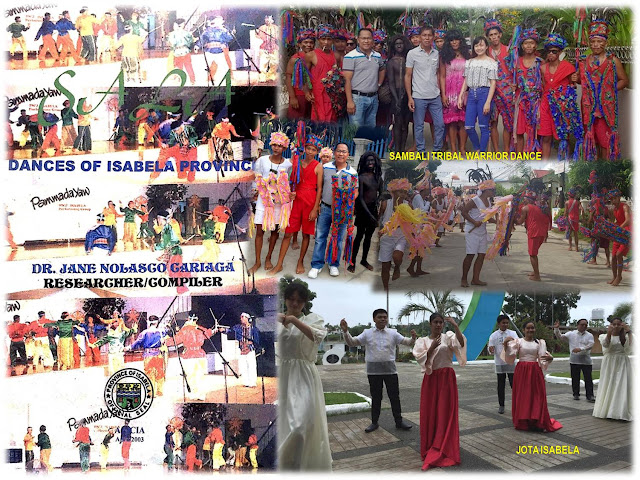52. ACT & BONIFACIO BY PSF
ACT & BONIFACIO BY PSF
Dr. Troy Alexander G.
Miano
30 November 2017
Last
week, the City Tourism Office of the capital city of Ilagan, Isabela handed ten
complimentary tickets for the “Bonifacio, Isang Sarsuela”, a Philippine Stagers
Foundation’s (PSF) 12th Season Offering. The sarsuela shown
yesterday was written and directed by lawyer Vincent M. Tañada, grandson of
modern day statesman-hero Senator Lorenzo Tañada, and music by Pipo Cifra. The two
and a half hour show gave me goose bumps all the way not only because of the dramatic
turn of events in Gat Andres Bonifacio’s life but also because the play
refreshed my past when I was once a child theatre actor at the Ateneo Children’s
Theater (ACT). A day before the annual public holiday, the city government led
by Mayor Evelyn C. Diaz sponsored the sarsuela which was played trice in a jampacked
airconditioned City of Ilagan Community Center.
It
has been almost three decades since I last acted on stage. The stories of my
mom, who was a member of the Philippine Educational Theatre Association (PETA)
in the 70s, inspired me to join the ACT in 1984. I played supporting roles in
the plays; Tolda (1984), Kuwentong Baboy (1985), Tagbituin (1986), Tatlong Gabi
sa Horror Disco House (1987) all written by Tony Perez and directed by Mariano
Singson, Jr. assisted by Pido Aguilar. The Ateneo Children's
Theater (ACT)
based at the Ateneo de Manila University Grade School Department at Loyola
Heights, Katipunan Avenue in Quezon City has been producing an annual play
since 1931, in which a large number of grade-school boys and girls from
neighboring schools, like Maryknoll (later Miriam College) and St. Bridget’s
Colleges, learn about theater, about values and people, and about history and
society, while developing their artistic talents.
The sarsuela of
Aliw Awardee for Best Actor and Director and PSF President
Vincent M. Tañada gave today’s generation a glimpse of politics among the
players of the Philippine Revolution. Almost all Filipinos can connect Andres
Bonifacio to the Katipunan but most Filipinos are not aware that the Supremo’s
martyrdom was orchestrated by Filipino forces and not by the arms of the 300
year old colonial masters Bonifacio wanted to expel.
A
glimpse of the Bonifacio tragedy in the net reads: “On April 25, 1897, a party
of Aguinaldo's men led by Col. Agapito Bonzón and Major José Ignacio
"Intsik" Paua, caught up with Bonifacio at his camp in barrio
Limbon, Indang, Cavite. The unsuspecting Bonifacio received them cordially.
Early the next day, Bonzón and Paua attacked Bonifacio's camp. Bonifacio was
surprised and refused to fight against "fellow Tagalogs", ordering his men to hold
their fire, but shots were nevertheless exchanged. Bonifacio was shot in the
arm by Bonzón and Paua stabbed him in the neck but was prevented from striking
further by one of Bonifacio's men, who offered to be killed instead. Andrés's
brother Ciriaco was
shot dead, while his other brother Procopio was beaten, and his wife Gregoria could
have been raped by Bonzón. From Indang, a half-starved and wounded Bonifacio
was carried by hammock to Naic, which had become
President Aguinaldo’s headquarters. Bonifacio's party was brought to Naic, where he and Procopio stood trial on
charges of sedition and treason against Aguinaldo's government and conspiracy
to murder Aguinaldo. The jury was composed entirely of Aguinaldo's men and
even Bonifacio's defence lawyer himself declared his client's guilt. Bonifacio
was barred from confronting the state witness for the charge of conspiracy to
murder on the grounds that the latter had been killed in battle, but after the
trial the witness was seen alive with the prosecutors. The Bonifacio brothers
were found guilty despite insufficient evidence and recommended to be executed.
Aguinaldo commuted the sentence to deportation on May 8, 1897 but Pío del
Pilar and Mariano Noriel persuaded him to withdraw the order for
the sake of preserving unity. In this they were seconded by Mamerto Natividád
and other bonafide supporters of Aguinaldo. The Bonifacio brothers
were executed on May 10, 1897 in the mountains of Maragondon.”
After
the show, the official driver of my office commented that it was only now that
he learned that Bonifacio was executed by fellow Filipinos and not by the
Spaniards. I jokingly asked him if he was absent when their teacher lectured
history and he responded that it was never taught in school. All he knew was
Bonifacio was a hero of the Revolution. Similar to an article in the net where
a youngster was asking why Apolinario Mabini was always seen seated throughout
the movie “Luna”. History should be properly taught in school and not by merely
memorizing names, terms and dates. History should be taught by simply story-telling
the incidents of our past and its lesson or by using other forms like theatre
acting and the like.
According to
Director Atty. Vincent Tanada, the play may not
encourage an overwhelming act of heroism like offering one’s life, but it is a
way to at least do something to make other people’s life better. It is helping
the forgotten sectors of society; educating and inspiring the youth by means of
the arts, visiting the prisoners, the aged and the sick are good examples of
modern Bonifacio deeds. Happy 154th Bonifacio Day!




Mga Komento
Mag-post ng isang Komento